According to equipment supplier Sandvik Mining, mechanized mining’s exponential growth dispels the myth that new techniques are not proving profitable on the African continent. In the last decade, according to the company, production volumes of southern African platinum mines rose from 2 million metric tons (mt) in 2000 to 35 million mt just 10 years later. Based on current mine development plans, output is projected to increase further to 80 million mt/y by 2020.
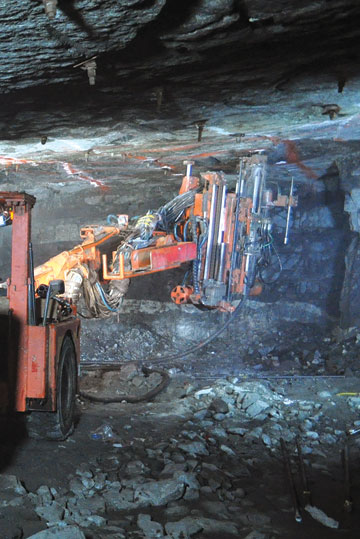
Mechanized mining in the predominantly narrow-vein South African platinum industry has largely been successful, says Sandvik Mining, despite a few well-publicized examples where its performance did not meet expectations.
“To claim that mechanization cannot work in narrow platinum mines is not true,” said Rod Pickering for Sandvik Mining. “Risks are inherent in both processes, but merely following a one-size-fits-all approach is more dangerous. Even despite the difficulty of extracting platinum in the narrow confines of platinum mines, we believe human hands do not always have to carry out the ‘dirty work’ in order to be profitable.”
Having worked in a broad cross-section of mines, both mechanized and “traditional,” Pickering believes that the answer to mining profitably is to do what is correct at a specific mine and individual shaft. In the future, with price pressures mounting, he said skillful mining will be required to extract the maximum efficiency out of each ton of ore mined. As orebodies are found at greater depths, mining operations will become more difficult and dangerous, forcing mine operators to adopt smarter approaches.
Pickering said, “We are already beginning to push the boundaries of human endurance underground in our platinum mines. Rock drill operators’ lives are not easy underground and the nature of the work is arduous and difficult. A rock drill weighs 23 kg and the thrust leg weighs 10 kg. This is connected to a pneumatic hose and a water hose and has to be manhandled into place and operated by a single person. As a result, operators are commanding far higher salaries that will in turn threaten the future sustainability of some traditionally operated mines.
“The challenge to prove the efficiency of mechanized mining is to begin using different measures to underpin the success or failure of mines or operations within a mine,” he continued. “A good example when measuring productivity of manually operated mines over mechanized mines has been the use of formulas relating to the cost per ton of ore removed from the mine. Modern mine managers, however, prefer measuring the cost per ounce extracted, as precision mechanized mining techniques are able to exclude unnecessary rock in favor of mining only rich deposits of ore.”
According to Sandvik, much has been said about operating cost comparisons between different techniques. Narrow reefs are typically less than 1 m in width, which means that mechanized room and pillar mines are about 1.8 m in height compared to conventional mines. With a tramming width of about 1.3 m, it is not practical to consider costs on a rand per ton basis, but rather on a rand per ounce of PGM material extracted. Based on a study by J.P. Morgan, mechanized mines, when measured in R/oz of PGM, are lower-cost operations than conventional mines.
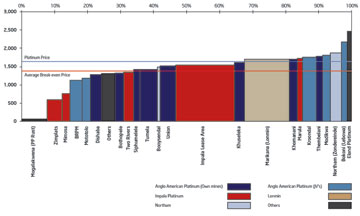
Platinum mining industry break-even analysis (cash cost + maintenance capex). Source: J.P. Morgan
Sandvik said the capital cost of equipment is about 20%–25% of the lifetime cost of the equipment and its operation. In other words, the operating cost and utilization efficiency swamp the capital cost.
“In terms of risks, modern measures are more succinct and clearly examine all aspects of a mine’s operation, including health and safety,” said Bjorn Gohre, general manager, marketing and sales at Sandvik Mining. “For example, are injuries or lost lives tolerable and is the risk of incurring a mine closure due to unsafe practices conceivable? In time, putting lives at risk will push salaries up and this in turn will put undue cost pressure on mines and seriously compromise long-term sustainability.”
The company pointed out that overseas mines, with comparable conditions, have overcome similar challenges by introducing mechanization into some or all of the processes in their mines. Based on the premise that one glove does not fit all, South African platinum miners must find smart solutions on an individual basis. Examples such as Lonmin’s Saffy shaft, which de-mechanized and has since struggled to keep ore reserves open due to low manual development rates, can be compared with the success of the neighboring Hossy shaft, which has fully mechanized development and keeps ore reserves open due to higher development rates.
Arne Lewis, vice president–hard rock cutting at Sandvik Mining, said the company maintains its strong commitment to mechanization in order to rebuild the region’s competitiveness on a global scale. “Worldwide, Sandvik makes a significant investment in research and development and that is something it maintains even during tough economic climates. If you can mechanize, you can remove a person from an area that has certain dangers and put him in a much safer working environment. There is often productivity enhancement with automated or remote-controlled operations, which ultimately leads to an overall cost advantage, making operations safer, more productive and ultimately more sustainable.”
“The inability of some South African operations to mechanize successfully is often blamed on operator skill and literacy levels, yet our studies highlight the problems as being a lack of skill and reluctance to change at the supervisory level through to the senior ranks within mining operations,” said Andre O Smit, operational manager, Sandvik trans4mine. “Our training and awareness programs are now targeting these levels with great success and we are eager to see those results materializing throughout our customer base in the next few years.”
In-House Oil Analysis Pays ROI Quickly
An operating gold mine has become a firm believer in the benefits of on-site, timely oil analysis to identify mechanical problems in loading and haulage units before they result in major repairs and unscheduled downtime. As reported by Spectro Inc., which specializes in providing oil-monitoring solutions, the low-grade surface mining operation previously sent samples to an outside lab for analysis, but the cost of this approach limited the number of samples that could be analyzed. In addition, the four-day turnaround to ship samples and receive results created a risk that damage could occur before the results were obtained.
The mine overcame this problem by creating an in-house lab based on Spectro’s Spectroil Q100 rotating disk electrode (RDE) atomic emission spectrometer and SpectroFTIR Q400 oil analyzer. It now can obtain oil analysis results in just 12 minutes and the reduced cost per sample has made it possible to increase the number of samples analyzed by almost tenfold. In its first year of operation, said Spectro, the in-house lab has helped the mine realize significant savings in downtime in repairs—savings that quickly paid for the purchase price of the instruments.
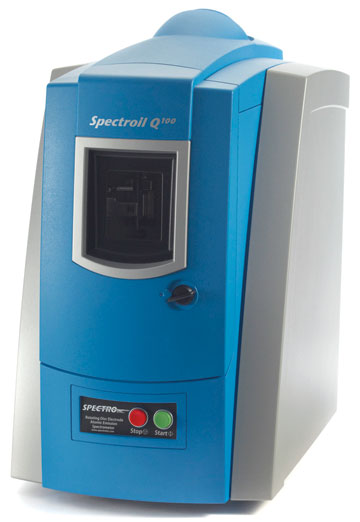
Spectroil Q100 spectrometer.
In the past, the gold mine had performed some oil monitoring in-house with a very basic analysis tool, but its lack of reliability forced the mine to depend primarily on an outside lab—which provided reliable results but involved a process that took two days to ship samples and another two days for the lab to analyze the samples. As a result, it was not uncommon that by the time the mine received information indicating a problem, the equipment had already failed. This situation resulted in unplanned downtime and substantially higher repair costs. In addition, the outside lab charged about $12 per sample and the mine paid $15 per sample for shipping costs. These costs limited the mine to analyzing an average of five samples per day.
The mine’s in-house lab was set-up to use the Spectroil Q100 to analyze wear, additives and contaminants in mineral or synthetic petroleum-based products and also uses the SpectroFTIR Q400 to measure oil degradation and contamination. Management also plans to purchase a SpectroVISC Q300 semi-automatic kinematic viscometer and SpectroT2FM Q500 analytical ferrography laboratory in the near future.
The mine uses the SpectroTrack laboratory information management system (LIMS) to automatically capture analysis results from the instruments and store them in a database where they can be accessed over the Internet and used to track trends. When a lab tech emails the RCM coordinator to alert him of a possible problem, he immediately logs into SpectroTrack and checks the history of the machine and other similar machines to help determine the best course of action.
The in-house lab has already identified and helped prevent catastrophic damage from four major equipment problems, each of which would have cost more to fix than the entire cost of outfitting the in-house lab. In one case, the in-house lab identified a glycol leak in a Caterpillar 793 haul truck. “If we had waited for results from an outside lab, we would have ruined the engine, which would have cost $400,000 to rebuild,” the RCM coordinator explained.
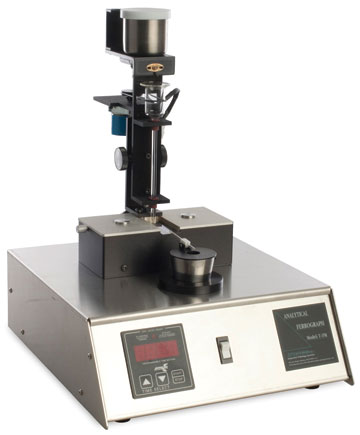
SpectroT2FM Q500 analytical ferrography laboratory.
“Instead, we fixed the leak at a cost of a few hundred dollars. On the same truck a few months later, we saw the tin and lead levels in the oil start to rise, indicating that the bearings were starting to go. Putting in new bearings avoided the catastrophic failure that was about to occur and saved $164,000, the value of the engine minus the cost of putting in the new bearings. Re-bearing cost only about 12 hours of downtime compared to 88 hours if we had had to change the engine.”
In another case, the lab detected copper levels in the transmission oil of a large wheel loader so high that the core would have been ruined in another eight hours of operation. The transmission had to be rebuilt, but preserving the core saved $78,000.
Oil analysis can also save warranty costs. During a failed-engine overhaul, the rebuilder took a sample from the bottom of the pan and claimed to have found high levels of glycol—and then blamed the failure on a glycol leak, which would not have been covered by the warranty. The mine then sent similar samples to its in-house lab and to an independent lab for verification—both of which came back with findings of “no glycol” in the sample. Consequently, the manufacturer covered the cost of rebuilding the engine, which saved the mine about $150,000.
“For every engine we save, we payfor the cost of operating the lab for an entire year, including the depreciation on the instruments,” the mine’s RCM coordinator stated. “We have already saved four engines in 18 months of operating the in-house lab, not to mention many other cases where we have had smaller but still substantial savings. The in-house lab is superior not only in providing faster results but also in providing results at a lower cost—about 12 cents per sample—which has made it possible to increase the number of samples we are able to analyze to about 50 per day.
“Finally, we are also saving a substantial amount of money on oil changes because the analyzers tell us exactly when an oil change is needed. With hydraulic shovels that use 1,500 gallons of oil at a cost of $3 per gallon, these savings add up. All in all, in-house oil analysis has provided substantial savings in downtime, equipment repair costs and oil costs that have paid back its cost several times over in only 18 months.”
Unit Lets Non-expert Workers Check Oil Viscosity
Spectro recently introduced the latest evolution of its SpectroVisc Q3000 series of portable kinematic viscometers that are designed to quickly measure lubricant viscosity in the field. The range of the new SpectroVisc Q3050 model extends from 1cSt-680cSt at 40°C; the new functionality is the result of a new polished cell that provides the range and performance enhancements. The unit can also calculate 100˚C viscosity values with the input of the VI index.
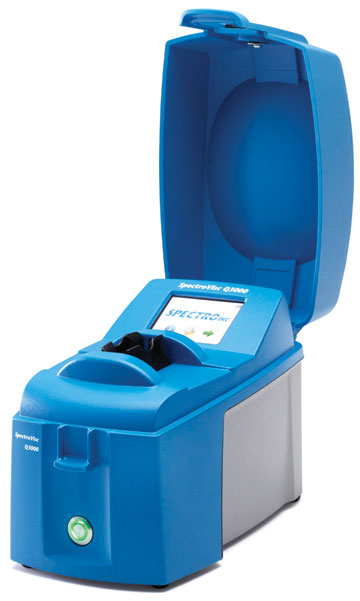
SpectroVisc Q3050 portable viscometer.
Spectro Inc. President and CEO Brian Mitchell said, “The extended measurement range of the SpectroVisc Q3050 kinematic viscometer will enable users to handle a wider range of testing applications and thereby increase their ability to control operational and maintenance costs, minimize downtime, and prevent catastrophic equipment failures. The SpectroVisc’s small size, zero solvent usage and minimal sample volume features are consistent with our mission of developing and deploying field portable, analytical tools for operation by non-expert users.”






